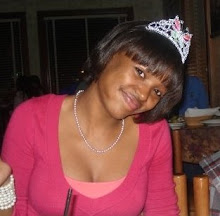I want to focus on “The Lady of Shalott” for this blog because there seems to be a lot involved in it. After looking over it a few times, and listening to Dr. Glance’s podcast, I realized that every stanza ends in the word Shalott, and line 5 of every stanza ends in Camelot, but there are two exceptions to this trend. Line 77 of Part 3 reads “Of bold Sir Lancelot” (591). This is our first time knowing about Lancelot, why he is in Shalott we do not know, but we do see that, assuming Part 3 is written in Lady Shalott’s point of view, Lady Shalott thinks highly of him in her description that follows- highly enough to leave her station in order to find him.
The second exception is line 108 at the end of the stanza when Lady Shalott hears him singing, it reads: “Sang Sir Lancelot” (591). The very next line reads: “She left the web, she left the loom,” symbolizing her sudden entrancement and fixation on finding this beautiful man (591). What I found conflicting about the piece is that at the end of the stanza, she says “The curse is come upon me,” locking in her fate, knowing what is going to happen next (591). But the reason it’s so conflicting is that if she knows what is in store for her, it bothers me that she can’t simply stop herself. Perhaps the point is to say that people will weave these webs entangling themselves to their own tragic fate, and once fate is involved, what else is there that could control our lives more than that?
Every single remaining stanza of Part 4 ends with the line “The Lady of Shalott,” showing that she is perhaps leaving her mark as she progresses toward, and finally arrives at, Camelot (592). It seems that if Tennyson was more concerned with Lady Shalott leaving her mark on the world he would have kept the original ending, with her having the last word. In changing the ending, I think he felt a need to be sure that the reader didn’t think that Lancelot was inhumane or didn’t have the ability to show any remorse. I don’t think that Lancelot should be mistaken for someone who doesn’t care about the lady because it isn’t his fault that he was the outlet for the fulfillment of her curse.
On a side note: it seems that Tennyson had a certain tendency to write about death. From the introduction, we see that his first paid poem was an ode on the death of his grandmother, but we also see that the first several writings in his section of the anthology involve death, including the death of the giant beast in "The Kraken," the woman who cries out wishing she were dead in "Mariana," and "The Lady of Shalott", whose entrancement causes her own death. I’m not sure of what this could mean, perhaps Tennyson simply wanted to maintain that death is inevitable, even in some of his mildly fantastic and unrealistic pieces.
Monday, June 29, 2009
Subscribe to:
Post Comments (Atom)

Jalisa,
ReplyDeleteGood discussion of Tennyson's pome! I like the way you present and discuss specific passages from the text, and the way you then move beyond the text to speculate on Lancelot and Tennyson's recurrent theme of death.
In response to your question about why she continues when she realizes that the curse is upon her, I think she figures "why not go for her." With the symbolic cracking of the mirror she knows that something is going to happen. Like the mirror, the curse can't be reversed by her simply going back to the loom. So I figured she just went ahead and embraced what little time she had to finally experience the world around her. But thats just my interpretation.
ReplyDelete